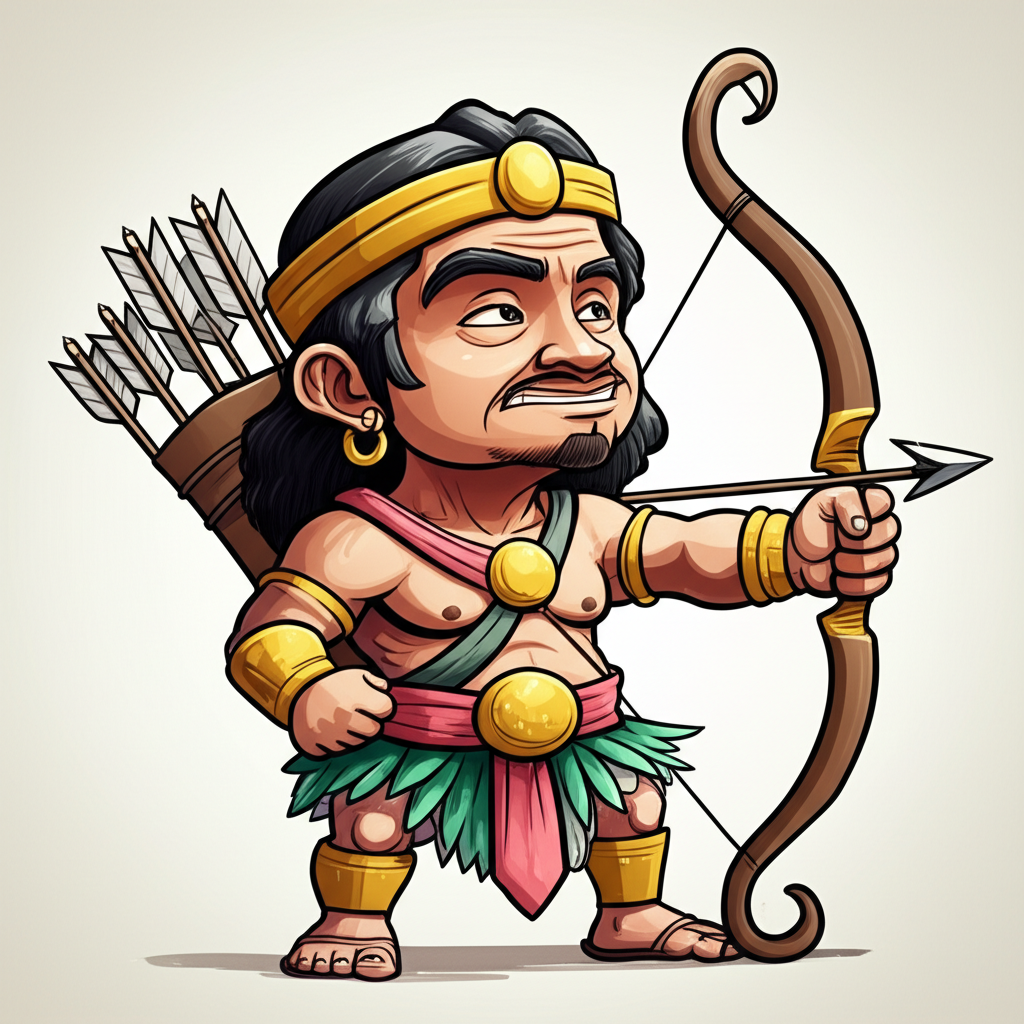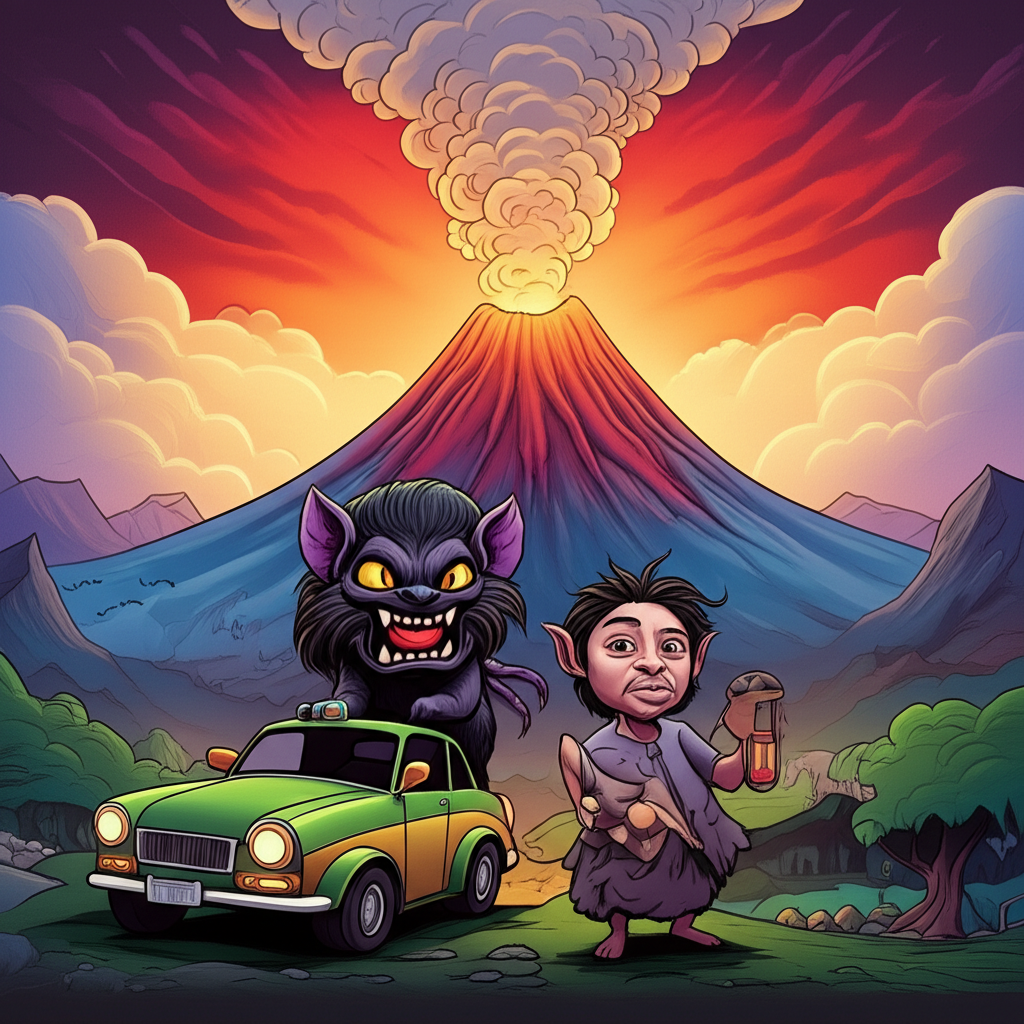
The human experience, across every continent and throughout every age, has been shaped by the stories we tell. These narratives, passed down through generations, offer profound insights into how ancient peoples perceived their world, explained the inexplicable, and sought meaning in the vastness of existence. Among the rich tapestry of Philippine mythology, one such compelling tale emerges from the Tagalog people: the story of Amanikable and his arduous "Trial of Creation." This traditional narrative, deeply embedded in the pre-colonial spiritual landscape of the Philippines, is presented here purely for its cultural, historical, and educational value, offering a glimpse into the imaginative universe of our ancestors.
Origins and Cultural Background: Echoes from a Primordial Past
To truly appreciate the myth of Amanikable, one must journey back to the pre-colonial Philippines, an era shaped by animism, a profound respect for nature, and a vibrant oral tradition. The Tagalog people, like many indigenous communities across the archipelago, lived in a world where the sacred permeated the mundane. Their environment – the teeming seas, fertile lands, towering volcanoes, and dense forests – was not merely a backdrop but a living entity, imbued with spirits and deities.
In this ancient worldview, every natural phenomenon, from the gentle whisper of the wind to the raging fury of a typhoon, had a spiritual explanation. Deities like Bathala (the supreme creator), Mayari (goddess of the moon), Tala (goddess of the stars), and Haliya (goddess of the moon and night) populated their cosmos, each presiding over distinct aspects of life and the environment. These myths were not mere bedtime stories; they were foundational texts, guiding principles, and historical records, explaining the origins of the world, the cycle of life and death, the moral codes of society, and the very essence of their cultural identity. People revered the anitos (ancestral spirits and nature deities), offering prayers and rituals to maintain harmony with the spiritual realm, believing that their actions directly impacted the benevolence or wrath of these unseen forces. It was in this deeply interconnected, spirit-filled world that the narrative of Amanikable took shape, reflecting a people intrinsically linked to the immense power and mystery of the ocean.
Amanikable: Lord of the Restless Waters
At the heart of this particular creation narrative stands Amanikable, the primordial deity of the sea. Unlike some benevolent or purely destructive figures, Amanikable embodies the dual nature of the ocean itself – a source of immense bounty and life, yet also a force of unpredictable power and danger. He is often depicted as a formidable figure, whose very presence could stir the calmest waters into a tempestuous rage or soothe the fiercest storm into a gentle lull.
Symbolically, Amanikable represents the boundless, untamed essence of nature. His dominion over the oceans, the vast expanse that cradled the archipelago, made him a critical figure in a maritime culture. He was the bringer of sustenance, providing the fish and resources essential for survival, but also the harbinger of typhoons and tidal waves that could devastate coastal communities. His attributes – control over marine life, the ebb and flow of tides, the roar of the waves, and the depth of the abyssal plains – signify the Tagalog people’s intimate relationship with the sea, recognizing its overwhelming power and the need to live in harmony with it. He is not a being to be worshipped in a devotional sense, but rather a compelling mythical personification of the elemental forces that shaped their world and their daily lives.
The Trial of Creation: Shaping the Archipelago
Before the islands of the Philippines rose from the depths, before the lush forests blanketed the land, and before humanity walked upon its shores, the world, in the Tagalog primordial vision, was largely an expanse of restless waters. This was Amanikable’s domain, a vast, undulating sea, magnificent in its emptiness, yet incomplete. The supreme deity, Bathala, had set forth a grand design, a vision of land and life, and it fell to various primordial beings to play their part in its manifestation. For Amanikable, the task was monumental: to coax land from the very heart of his watery kingdom, to participate in the shaping of what would become the archipelago. This was his "Trial of Creation."
Imagine the deep, shimmering expanse, reflecting an ancient sky, unbroken save for the endless horizon. Amanikable, the mighty god of the sea, felt the stirrings of this grand purpose within him. He was not merely a passive observer; he was an active participant in the cosmic drama. The legend tells of his initial efforts, immense and tireless. He commanded the currents, urging them to converge, to build upon themselves, to resist the very nature of water that sought to spread and dissolve. He called upon the subterranean fires, deep within the earth’s core, to push upwards, to heave the seabed into new forms.
This was no simple feat. The sea, his own essence, resisted him. Each attempt to raise land was met with the relentless pull of the depths, the erosive power of the waves, the sheer weight of the ocean itself. Mountains that began to emerge were battered by colossal storms, their nascent peaks worn down by the ceaseless motion of the water. Islands that attempted to surface were swallowed back into the abyss, their forms dissolved by the very element Amanikable commanded. It was a struggle against his own nature, a test of will and power against the inherent fluidity of his domain.
Yet, Amanikable persisted. He was not driven by vanity, but by the cosmic imperative, the shared vision of creation. He wrestled with the primordial forces, his strength evident in the churning of the waters, the tremors beneath the surface. With immense focus and sustained effort, he began to succeed. He channeled the volcanic fires, guiding them to erupt and solidify, forming the core of future landmasses. He commanded the sediment to accumulate, layer upon layer, until vast formations began to break the surface. He shaped the coastlines, carved the bays, and formed the deep trenches that would become the ocean’s silent valleys.
Slowly, painstakingly, the Philippine islands began to emerge. First, towering volcanoes, their peaks piercing the clouds, then the undulating plains, the rugged mountains, and the myriad smaller islands, scattered like emeralds across the sapphire sea. Amanikable’s trial was complete, his immense labor having brought forth the very land that would cradle life and civilization. His act of creation was a testament to the power of perseverance, transforming a boundless void into a complex, vibrant world.
Symbolism and Meaning: A Tapestry of Ancient Understanding
To the ancient Tagalog people, the myth of Amanikable and his Trial of Creation was far more than an exciting story; it was a profound explanation of their physical world and a reflection of their values. Primarily, it served as a foundational creation myth, accounting for the unique geological formation of the Philippine archipelago – a chain of islands born from the sea. It underscored the immense power and formative role of the ocean, acknowledging its dual capacity for both creation and destruction, a concept deeply ingrained in a maritime culture constantly interacting with its vastness.
The narrative also symbolized the struggle inherent in any act of creation. Even a powerful deity like Amanikable faced immense challenges, highlighting that significant achievements require sustained effort, resilience, and the overcoming of obstacles. This could have resonated with the human experience of cultivating land, building communities, or navigating the treacherous seas. Furthermore, it subtly conveyed the interconnectedness of all things: Amanikable, though a sea god, worked in conjunction with other elemental forces (subterranean fire) to bring forth the land. It reinforced a deep reverence for nature, portraying the natural world not as a passive backdrop, but as a dynamic entity shaped by powerful, conscious forces. The story, therefore, offered both an origin story and a moral lesson on perseverance and the awe-inspiring processes that shaped their home.
Modern Perspective: Echoes in Contemporary Culture
While Amanikable and his myth are no longer part of a practiced belief system, their legacy endures in modern Philippine culture. These stories are increasingly recognized as invaluable components of the nation’s cultural heritage, offering a window into the pre-colonial mind and worldview. In literature, Amanikable serves as an inspiration for authors seeking to weave indigenous folklore into contemporary narratives, enriching the tapestry of Philippine fantasy and speculative fiction. Art often draws upon his imagery, depicting him as a powerful, majestic figure, symbolizing the nation’s profound connection to the sea.
In academic and cultural studies, the myth is a subject of research, helping scholars understand pre-colonial belief systems, comparative mythology, and the evolution of Philippine identity. Even in modern media like television series, graphic novels, and video games (e.g., Trese and other works that incorporate Philippine folklore), figures inspired by or directly referencing deities like Amanikable appear, captivating new generations and ensuring these ancient tales continue to resonate. They are celebrated not as literal truths, but as powerful metaphors and imaginative narratives that speak to universal themes of creation, struggle, and the human relationship with nature.
Conclusion: A Legacy of Imagination and Heritage
The tale of Amanikable and the Trial of Creation, like countless other myths from across the globe, is a testament to the boundless human imagination and our innate desire to understand the world around us. It is a traditional story, passed down through the ages by the ancient Tagalog people, offering a glimpse into their profound connection to nature and their intricate cosmology. It is crucial to reiterate that this narrative is presented solely for its cultural, historical, and educational significance, and is not to be understood as a real event or a basis for belief, worship, or practice.
As Muslims, we recognize that the true Creator and Sustainer of the universe is Allah (SWT) alone, who brought all existence into being with His divine power and wisdom, "Kun fa-yakun" (Be, and it is). Our faith teaches us the singularity of God and the perfection of His creation, which operates according to His immutable laws.
Nevertheless, the study of such myths enriches our understanding of human ingenuity and the diverse ways in which cultures have sought to explain their origins and the mysteries of life. These stories are invaluable threads in the fabric of cultural heritage, reminding us of the enduring power of storytelling to preserve identity, impart wisdom, and inspire wonder across generations. They invite us to appreciate the richness of human imagination and the legacy of narratives that continue to inform and inspire us today.





